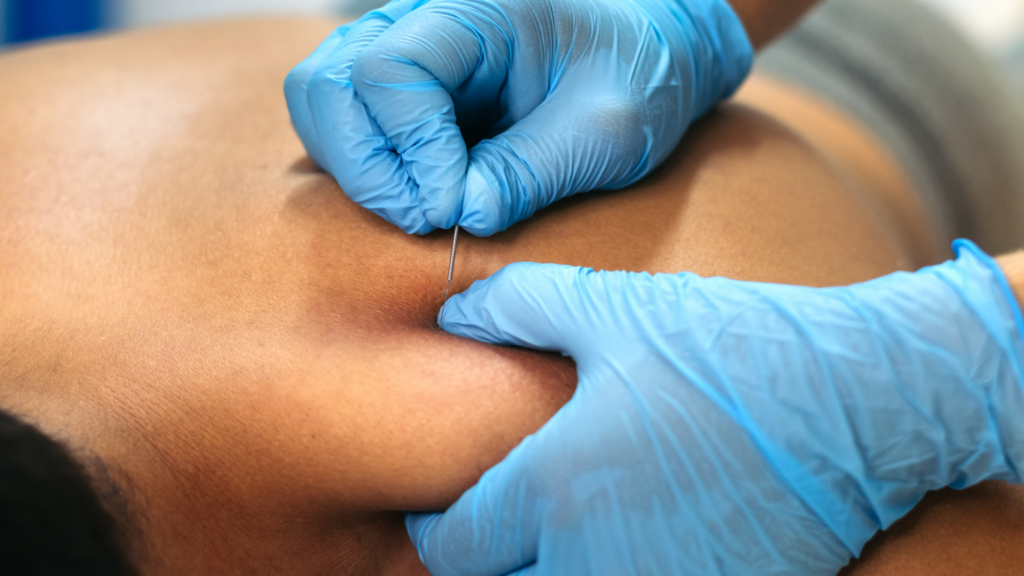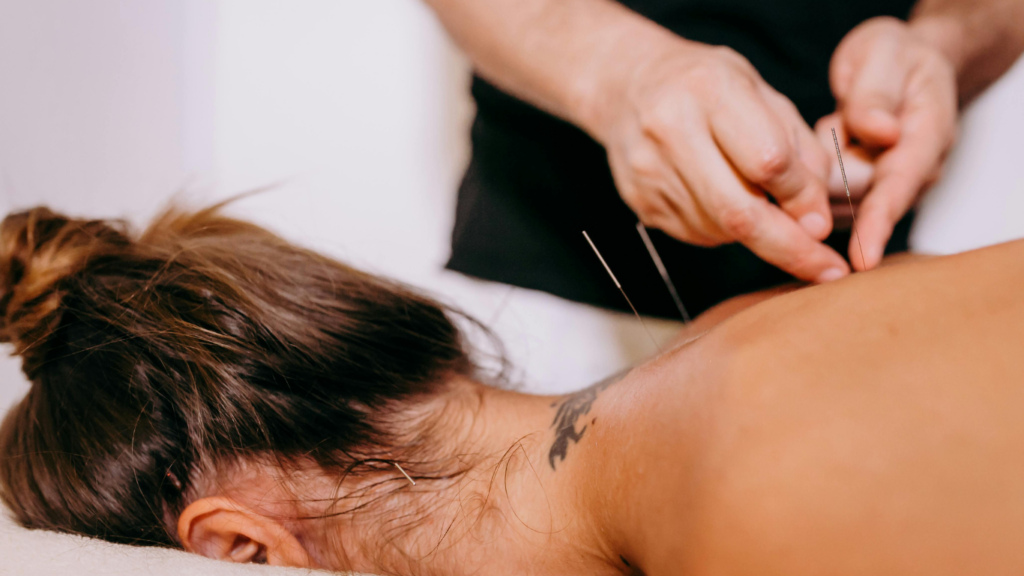Sports injuries are a part of every athlete’s life — from professionals on the field to fitness enthusiasts hitting the gym. Whether it’s a strained hamstring, an aching shoulder, or a stubborn tendon pain, injuries can limit performance and delay recovery.
While traditional treatments like rest, ice, and physiotherapy remain essential, dry needling is rapidly emerging as a powerful modern technique in sports medicine — helping athletes heal faster, move better, and perform stronger.
What Is Dry Needling?
Dry needling is a therapeutic technique performed by trained physiotherapists to relieve pain and restore muscle function. It involves inserting thin, sterile needles into specific trigger points within muscles, tendons, or ligaments — areas that are tight, knotted, or overactive.
Unlike acupuncture, which follows traditional Chinese medicine principles, dry needling is based on modern anatomy and neurophysiology. Its primary goal is to relax muscle tension, improve blood circulation, and promote tissue repair.
By directly stimulating the body’s natural healing process, dry needling provides both immediate pain relief and long-term functional improvement, making it a trusted tool in sports injury rehabilitation.

How Dry Needling Works
When the needle is inserted into a trigger point, it activates a brief muscle twitch — called a local twitch response. This quick contraction helps:
- Release muscle tightness
- Improve oxygen and nutrient delivery
- Flush out metabolic waste
- Trigger endorphin release for natural pain relief
These combined effects promote faster recovery, reduce inflammation, and restore proper movement patterns essential for athletic performance.
Common Sports Injuries Treated with Dry Needling
Dry needling can be applied to a wide range of sports-related conditions, addressing both acute and chronic injuries. Here’s how it helps across different scenarios:
1. Muscle Strains
For pulled or overstretched muscles, dry needling targets the affected area to release tension, enhance blood flow, and speed up healing. It helps athletes regain flexibility and strength sooner.
2. Tendonitis
Overuse of tendons can lead to inflammation and pain — common in sports like tennis or running. By focusing on muscles surrounding the inflamed tendon, dry needling reduces stress, improves function, and relieves discomfort.
3. Runner’s Knee (Patellofemoral Pain Syndrome)
Dry needling alleviates runner’s knee pain by releasing tightness in the quadriceps and iliotibial (IT) band, improving knee alignment and reducing strain on the patella.
4. Tennis Elbow (Lateral Epicondylitis)
This painful overuse injury benefits greatly from dry needling. Targeting the forearm extensor muscles helps relax tissue, reduce inflammation, and improve grip strength.
5. Achilles Tendinopathy
In athletes involved in jumping or sprinting, dry needling the calf muscles and Achilles region reduces stiffness, improves tendon elasticity, and promotes faster recovery.
6. Plantar Fasciitis
By addressing tight muscles in the foot, sole, and calf, dry needling decreases heel pain and tension in the plantar fascia — restoring pain-free walking and running.
7. Rotator Cuff Injuries
In sports requiring overhead movement (like swimming or cricket), shoulder injuries are common. Dry needling helps correct muscular imbalances, increase shoulder stability, and reduce pain during activity.
8. Lower Back Pain
Lower back pain often arises from tightness in the lumbar and hip muscles. Dry needling releases these trigger points, easing stiffness and improving spinal mobility — crucial for performance and posture.
9. Hamstring Injuries
For torn or tight hamstrings, dry needling targets deep muscle fibers to stimulate healing and restore flexibility. It’s a go-to therapy for runners and footballers recovering from strain.
10. Sprained Ankles
By addressing tightness in muscles supporting the ankle joint, dry needling improves stability, reduces swelling, and speeds up recovery after a sprain.
Benefits of Dry Needling for Athletes
Dry needling isn’t just about pain relief — it’s about performance recovery and prevention. Here’s why athletes and physiotherapists rely on it:
Fast Pain Relief: Promotes endorphin release and calms overactive nerves.
Reduced Inflammation: Improves circulation and tissue repair.
Better Flexibility: Loosens tight muscles to restore range of motion.
Enhanced Recovery: Accelerates the body’s natural healing mechanisms.
Targeted Precision: Reaches deep-seated muscle issues that massage or stretching can’t access.

Safety & Professional Expertise
Dry needling is a safe and effective treatment when performed by trained physiotherapists. Practitioners at Physioneeds Academy undergo specialized training in anatomy, safety, and advanced dry needling techniques to ensure optimal results.
Minor side effects like soreness or mild bruising may occur, but they usually subside within a day or two.
It’s essential that dry needling is not self-administered — always consult a certified professional for assessment and treatment.
Why Athletes Trust Dry Needling
From elite professionals to fitness enthusiasts, athletes appreciate dry needling for its speed, precision, and effectiveness. It not only treats pain but also helps prevent recurring injuries by addressing the root cause — muscle imbalance and dysfunction.
When combined with physiotherapy exercises, strength training, and proper recovery protocols, dry needling becomes a complete rehabilitation tool that keeps athletes performing at their best.
Conclusion
Dry needling has revolutionized the world of sports rehabilitation. Its ability to reduce pain, release muscle tension, and accelerate healing makes it one of the most valuable tools in physiotherapy today.
For athletes eager to get back in action quickly and safely, dry needling truly is a needle to the rescue.
Learn Dry Needling with Physioneeds Academy
Want to master this powerful technique?
At Physioneeds Academy, we offer certified Dry Needling Courses designed for physiotherapists who want to expand their clinical skills and expertise in sports rehabilitation.
Learn from expert instructors, get hands-on practice, and earn your certification to elevate your physiotherapy career.
